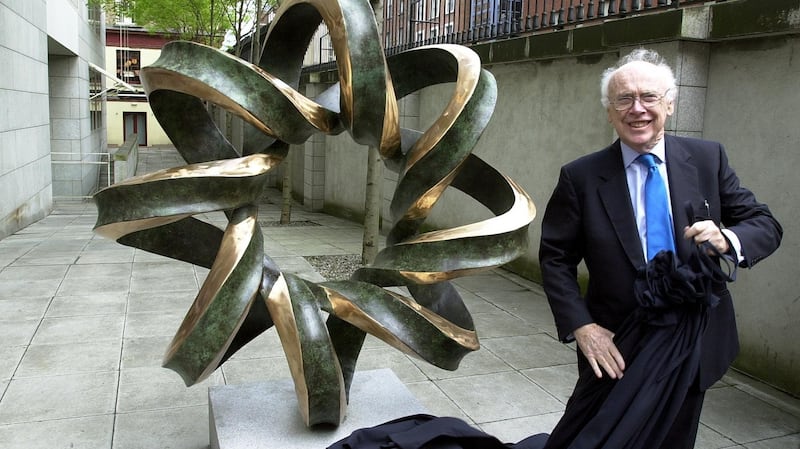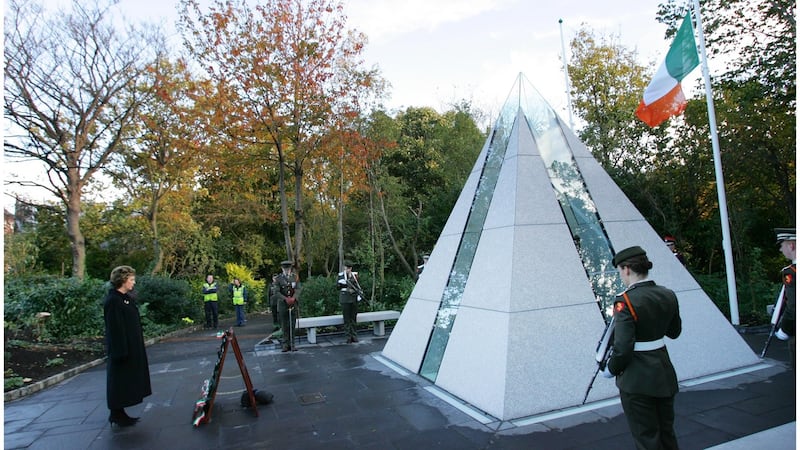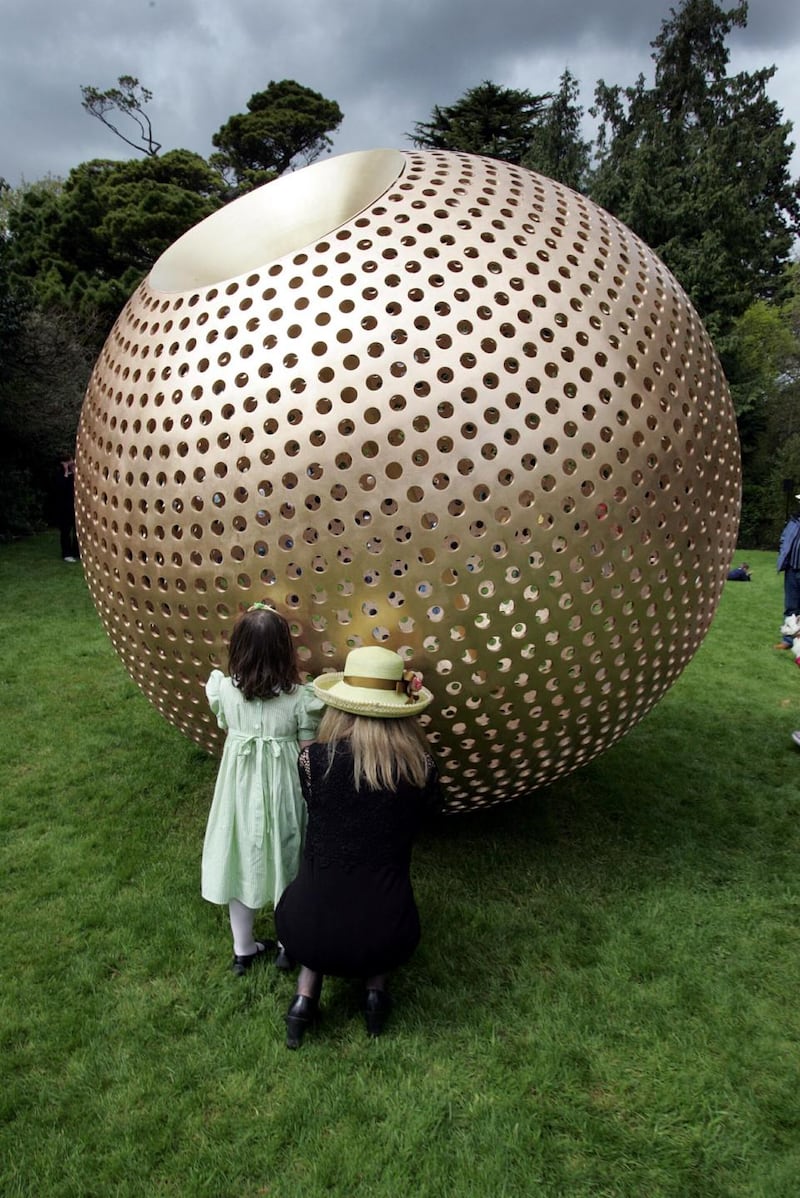Born in Dublin, Brian King was one of the foremost Irish sculptors of his generation. In fact, for about 20 years following his graduation from NCAD in 1963, the ambition, scope and rapid evolution of his work were without precedent in the country. In that time he moved from making large-scale, minimalist abstract sculptures to audacious projects in land and environmental art, all conceived and delivered with great bravura and conviction. While the former were built to last, the latter were by their nature temporary and ephemeral, designed to disappear.
While the regime at NCAD was conservative when he studied there, he later observed to John Turpin that: "There was no value attached to the making of completed works, since the aim was that students should simply use any exercise as a means to the end of acquiring facility." So what they sculpted in clay, for example, was simply broken up. When he himself was a lecturer at NCAD, he brought students on a field trip to Cummeen Strand in Co Sligo in 1976 where he made Sea Holes: four transparent, two-foot-square columns were planted in the sand to be surrounded, then filled by the rising tide. When the tide receded, four cubes of water were revealed, and then gradually drained away into the sand.

A high point and culmination of this phase of his work was Gallery Skeleton, a site-specific installation made at the Taylor Galleries in 1979, consisting of massive, suspended wooden beams held together by fabricated steel joints. It both celebrated and challenged the physical fabric of the space and the building – literally so, prompting some anxiety on the part of gallerists John and Pat Taylor.
Transformation
The trajectory of King’s development from the late 1960s reflects his openness to a huge expansion and transformation in sculptural practice internationally at the time. But he did not just embrace novelty for its own sake. One can sense his excitement at the expanded possibilities, and he brought his own sensibility and concerns to everything he did. There was, for example, a recognisable connection between his land works and Irish megalithic tombs and other monuments in the Irish landscape.
That link with ancient, ritualised cultural relationships to landscape endured when he went on to make smaller works in more conventional materials including bronze, wood and stone. Writing in 1988, Gerry Walker discerned consistent thematic concerns around magic, sex and death in his work. Over the years King had developed a repertoire of forms, an “assortment of metallic circles, spirals, ladders and spheres, boats and ziggurats (the true synthesis of architecture and sculpture)”. His recurrent use of pyramidal forms confirmed Egyptian mythology as one point of reference.

He was born off the South Circular Road in Dublin to John “Jack” and Carmel King, but he did not speak much about his early life, even to his immediate family. It is said that his father was involved in the fishing and hunting equipment trade. He was certainly a skilled leather worker. The family home was a cottage with a generous garden on Brainboro Terrace. The Mayo-born stained glass artist Richard King was said to be a family relation. Brian had an elder brother, Anthony, who moved to Bristol. Over time, sporadic contact between them petered out.
Benefactor
One family legend has it that a benefactor financed King’s attendance at NCAD. After he completed his studies there he spent two years in London, and was based in New York through 1968. That same year he first exhibited at the Dawson Gallery, moving on to the Taylor Gallery from 1979. Representing Ireland at the Paris Biennale in 1969 he scooped the top award, one of many accolades. He was president of the Irish Exhibition of Living Art (IELA), the foremost annual group exhibition of contemporary art in Ireland, for 10 years from 1972, and headed the sculpture department of NCAD from the early 1980s until 2004.
His friends and contemporaries included Robert Ballagh, Micheal Farrell and Michael O'Sullivan
The painter Martin Gale recalls how, in the 1970s, King would visit him regularly at Manor Kilbride to go fishing. He was struck by King’s easy expertise as a fly fisherman – later he became an enthusiastic golfer. His friends and contemporaries included Robert Ballagh, Micheal Farrell and Michael O’Sullivan. When Brian O’Doherty adopted the name Patrick Ireland at an IELA performance at the Project Arts Centre in 1972, King and Ballagh painted him green and orange, applying pigment until the colours mingled and merged in a muddy, allegorical mess.
John Lennon fan
He was a passionate John Lennon fan. RHA Director Patrick T Murphy recalls that, in December 1980, he was installing a Ballagh show in the Limerick City Gallery when King burst in the door. He said he had been on a routine errand in Dublin when the news of Lennon’s assassination came on the radio and he just kept driving without any clear idea of where he was going, ending up in Limerick.

Substantial works by King occupy sites in Dublin, Galway, Kildare and more, and his work is included in several major public collections. His many public commissions include Galway Yellow, 1976, a monumental painted steel construction at UCG based on a geometric rendering of "a Celtic knot" (popularly known among students as the Big Yellow Thing or Archimedes' Balls), his bronze Farmleigh Convergence, commissioned by the OPW for Farmleigh in 2006, and his 2008 memorial, in Merrion Square Park, to members of the Defence Forces who died in service.
He is survived by his children Julian, Adele and Lara, and their mothers, Joan and Tania, and grandchildren Lochlann and Naiara.








